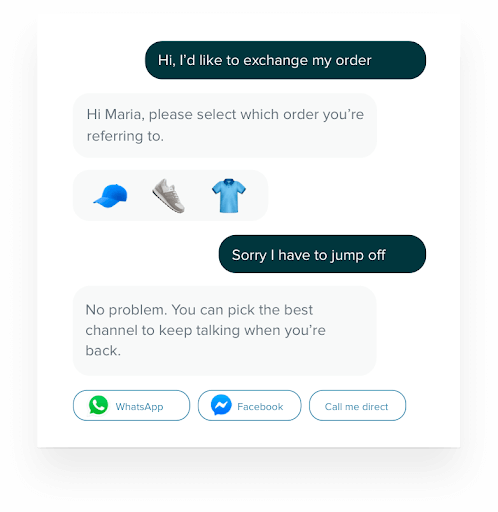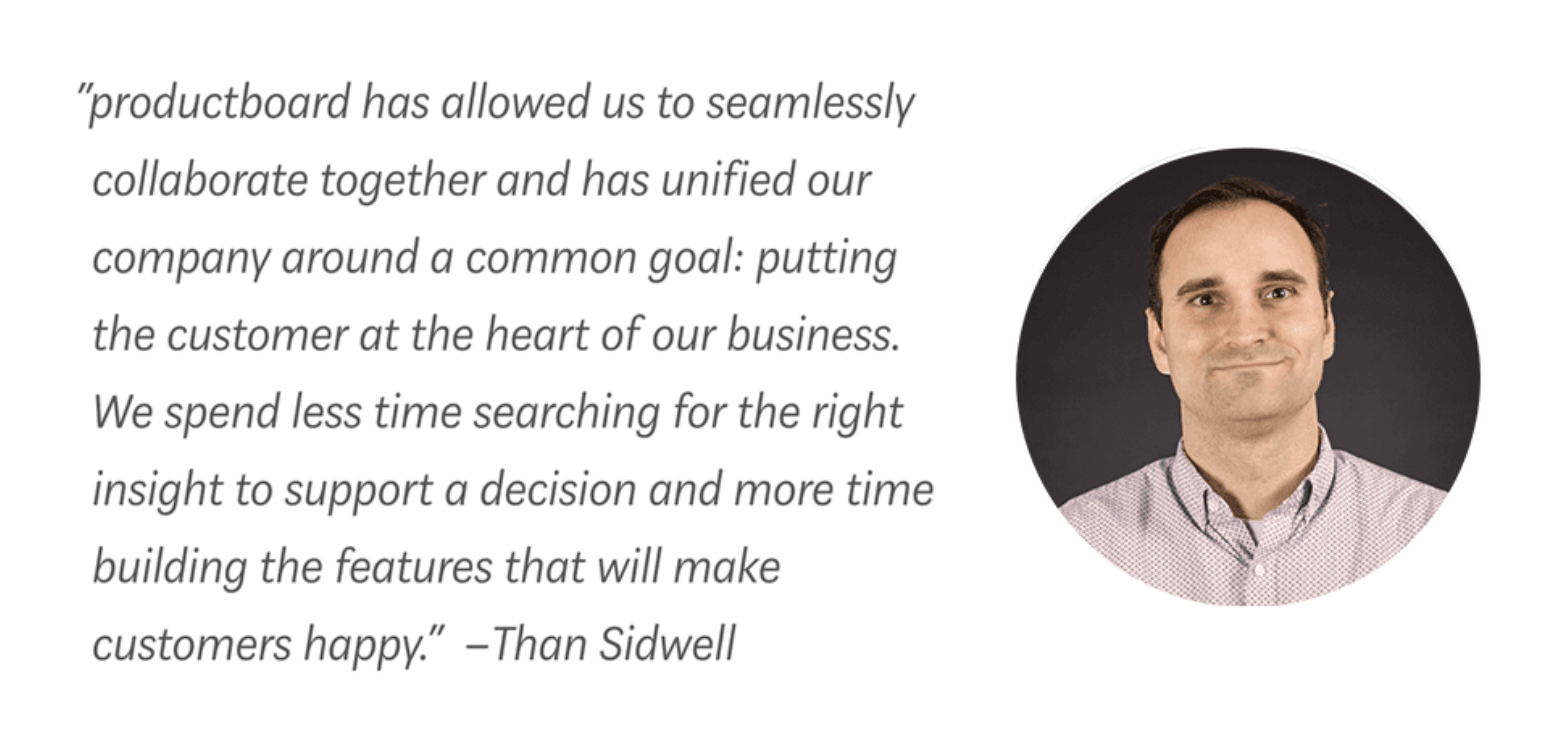How 7 leading organizations use Productboard to become more customer-driven

When it comes to building amazing products, the customer should always be the guiding factor behind decisions. But without a dedicated product management platform where you can store, organize, and prioritize customer feedback, it can be difficult to understand what customers really need.
With Productboard, organizations worldwide now have a single place to collect and manage customer insights, allowing them to make better, more customer-driven decisions.
Here are seven examples of how companies are using Productboard to better align with their customers’ needs.
Axon
“Customer success can say to a customer, these are the things on the roadmap you specifically requested and we’re developing for you.”
Axon’s mission is to protect life. Public safety professionals and various federal and corporate customers use their technology.
When Doug Waller, Senior Product Manager, joined the company, prioritization was not standardized. Product teams collected user research in Quip docs, while sales, support, and customer success logged requests and feedback as Jira tickets. If there was a similar request, the submitter tagged an older ticket with the latest customer. This presumed that all these customers needed the same thing.
All this changed with Productboard. Previously scattered user insights are consolidated in one centralized repository with the full context of the request and customers’ names.
“It’s really great that I can go back into Productboard and get to the bottom of why we’re really building this feature to begin with.” ”
Customer-facing teams also access the latest roadmaps, updated in real-time. They click into each feature for rich context on what’s being delivered. CSMs can even custom filter roadmaps live on a call to show upcoming features their customer requested.

Egynte
“We were hoping we would find tools to make it easier for us to get customer feedback, prioritize it and trace it through the whole process. ”
Egynte, a leader in the cloud content collaboration and governance space, had challenges staying on top of customer requests and tracking them through the entire process.
To ensure nothing slips through the cracks, Egnyte uses Productboard’s Portal to solicit customer feedback on their website from their customers.
“If you’ve got a 10,000-person deployment, maybe five people at that company are having one-on-one conversations with us and the other 9,995 are giving feedback internally. But [using the Productboard Portal] gives them more opportunity to provide feedback.”
With Productboard, Egnyte’s customers play a more active role in the design process by easily identifying which customers are interested in particular features for further research and beta testing.
“To go back and see the customers who are most interested in this feature is great for us. It’s a well we can draw upon to make sure we’re involving all the people to give us the best feedback or the best examples of why the features are important.”
Keeping track of which customers are interested in particular features allows Egnyte to prioritize what to work on and easily justify those decisions with concrete data. For example, when a new comment comes in, the team uses Productboard’s easily searchable Insights repository to see how many other customers made similar comments or requests. Before using Productboard, there was no centralized place to track those comments and product teams made decisions using a more anecdotal approach.
Zendesk
“Productboard’s powerful segmentation feature helps our teams narrow in on specific customer types and their unique feedback. We develop a deep understanding of the unique needs connected to each customer profile. This gives us clarity on where our sweet spots are for product fit and guides product strategy. Using these segments, we prioritize features and build the right products accurately reflecting those specific customers’ needs.”
Zendesk is a service-first CRM company building software to improve customer relationships.
Zendesk’s product team uses Productboard to deeply understand customers, provide clarity on their sweet spots for product/market fit, and guide product strategy. Zendesk specifically prioritizes and builds the right products reflecting specific customer needs using Productboard’s dynamic customer segmentation.

Pipedrive
“We had so many sources of incoming user feedback that managing it all in a meaningful way was challenging. Productboard really helped us funnel all these inputs into one place, see trends, and make better product decisions.”
Pipedrive is the leading sales and marketing CRM helping small and medium-sized companies.
Before using Productboard, user feedback scattered across numerous systems were waiting to be discovered. As a result, product teams lacked immediate access to all the valuable insights to guide key product decisions.
At Pipedrive, the product feedback sources included customer support conversations in Intercom, community forums, and formal user research like interviews and surveys. Additional feedback arrived from customer success and other internal colleagues that interfaced with customers, often via a Slack feedback channel.
All the feedback captured in Productboard is a valuable foundation for Pipedrive’s research activities, serving as a starting point for further exploration.
“We funnel lots of feedback into Productboard from Intercom and Slack, but so often these are requests for solutions customers want. So it’s really important to come to a deeper understanding of the customers’ needs. Productboard helps us see the original context behind the request. Once we understand that underlying problem we determine what would be the optimal solution.” — Katerina Merklova, product researcher.
SmartHR
“Whenever we want to make a decision about a feature, we have tons of customer feedback from different segments and different channels. So product managers look at the product feedback in Productboard and quickly make a good decision.”
SmartHR’s platform makes life easier for employees and employers, speeding up the time it takes to onboard new-starters and complete once-complicated HR processes.
As Vice President of Product Marketing, one of Masaomi Takahashi’s key goals is delivering what users want. But with customer feedback piling up in spreadsheets, making sense of customer needs was a big challenge.
After transitioning from spreadsheets to Productboard, Masaomi and his team easily gathered feedback from anywhere, labeled it according to the feature, customer segment, and customer impact, and referenced it when making prioritization decisions. They drove growth by understanding what customers need.

Sprout Social
“Having all our user research and feedback in one place is a huge time-saver for us. Across the team, this saves hours of effort every day.”
In the early days of this popular social media management platform, feature requests were flooding in from all angles. It was up to Arnita Curtis, VP of Product, to take all these inputs and transform them into new features. But with insights spread across email, spreadsheets, or even lost in unrecorded conversations, this was no easy job.
After trying various tools for idea management and roadmapping with little success, she discovered Productboard. Specifically, she was drawn to the Insights board, which provided her with a central place to collect customer insights and feedback.
Today, Productboard helps Hayden and her team keep track of customer feedback and feature requests, reroute the right insights to the right PMs, and prioritize requests based on their potential impact. This helps Sprout Social decide which features to build next to ensure they are delivering a product that customers will continue to love.
CoConstruct

CoConstruct, a software platform for custom homebuilders and remodelers, always put the customer at the center of their product. But they lacked a tool to surface the right insights and guide decisions around what to build next.
When product designer Than Sidwell joined the company, notes from customer conversations were scattered across spreadsheets and Google docs, making them a nightmare to manage. As a result, the team often made product decisions based on gut instincts and memory rather than specific evidence.
Than’s desire to take a more customer-driven approach to product decisions eventually led him to Productboard. As a result, CoContruct’s product team completely rethought its feature research process and brings more value to end-users. It sped up the product development process, allowing them to get to market around 30% faster, and eliminating the need for costly rework in the prototyping and building phase.
Become more customer-driven with Productboard
To start on your journey towards customer-centric product management, request a Productboard demo today.





